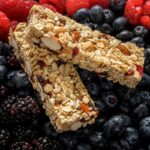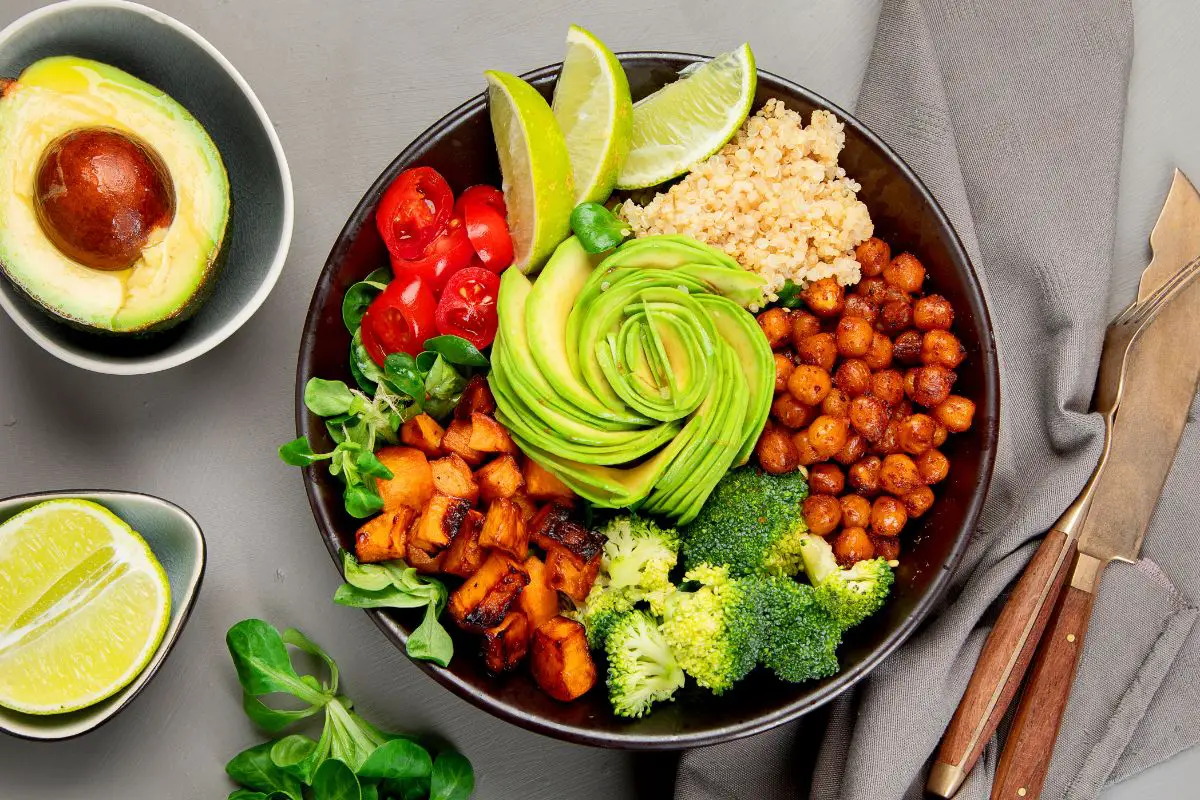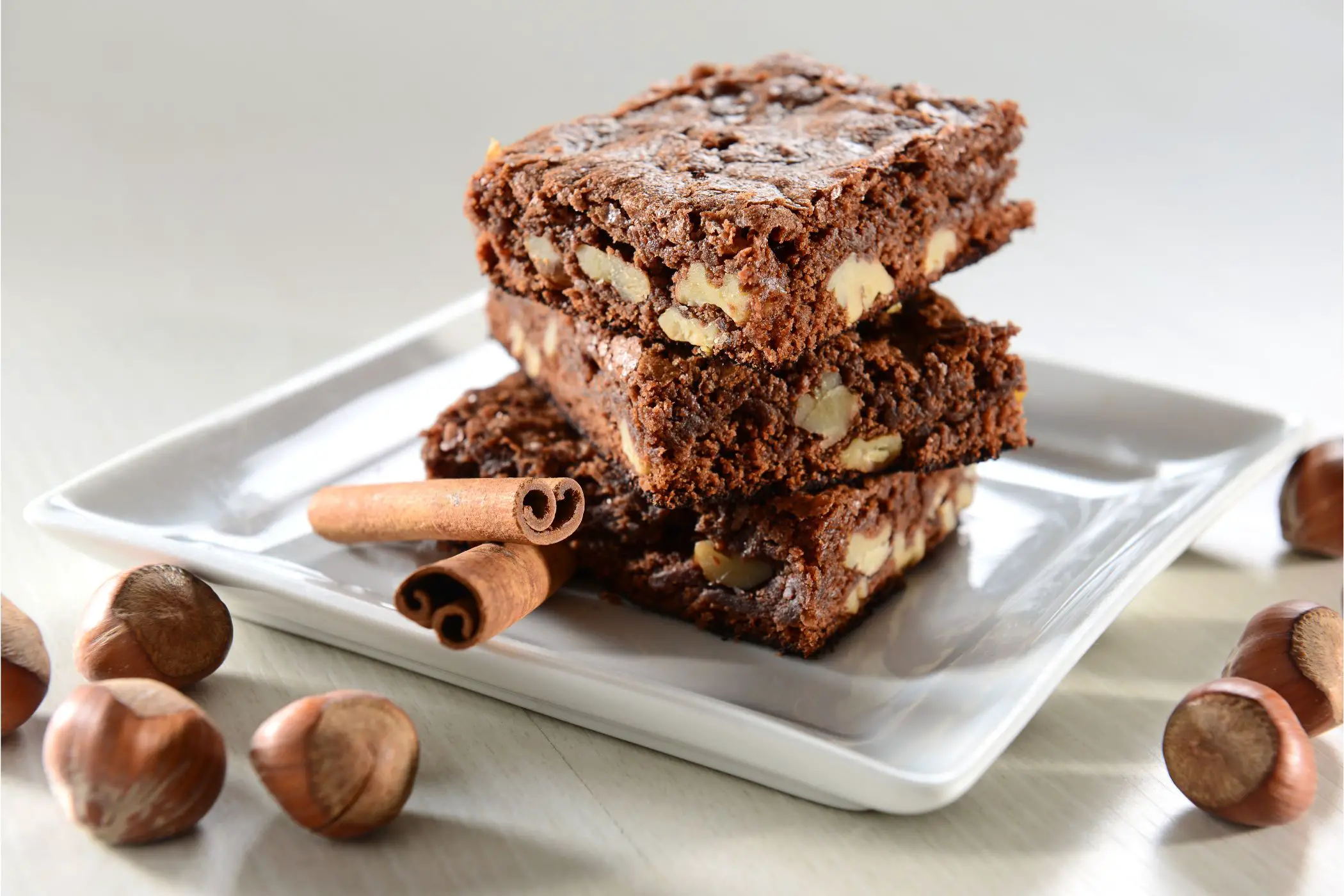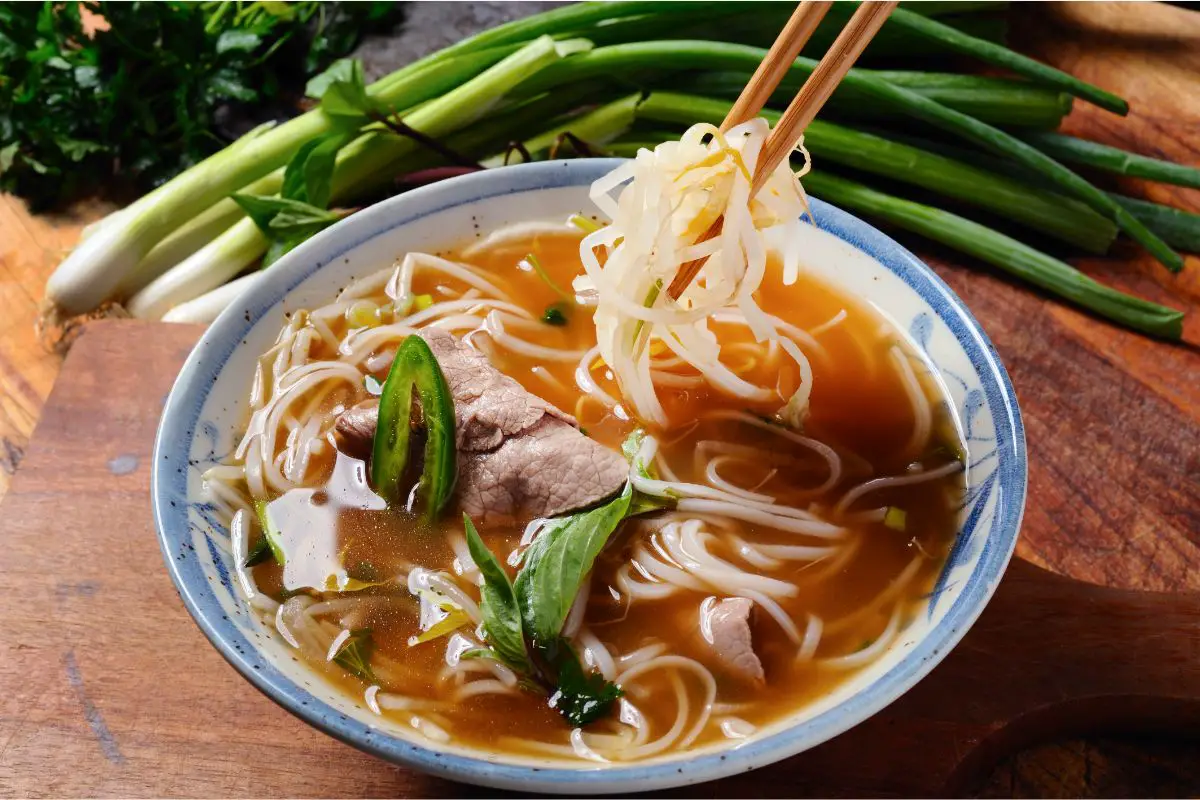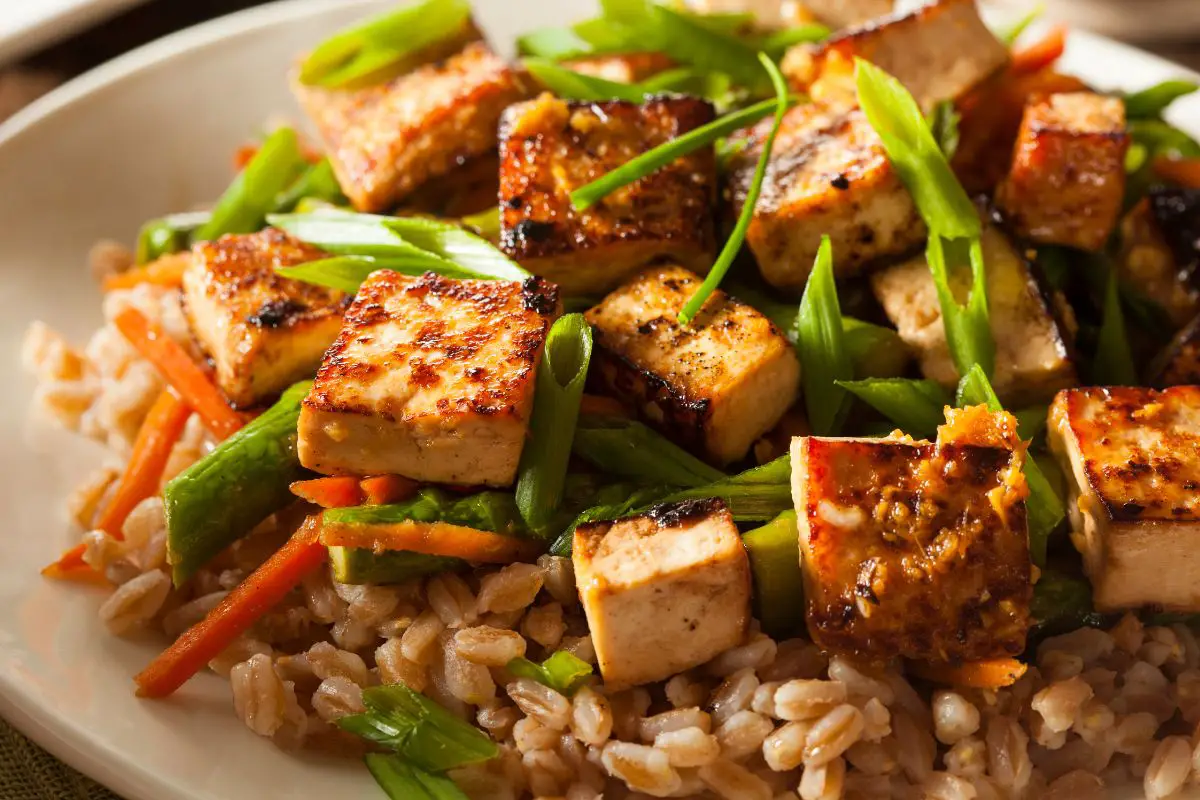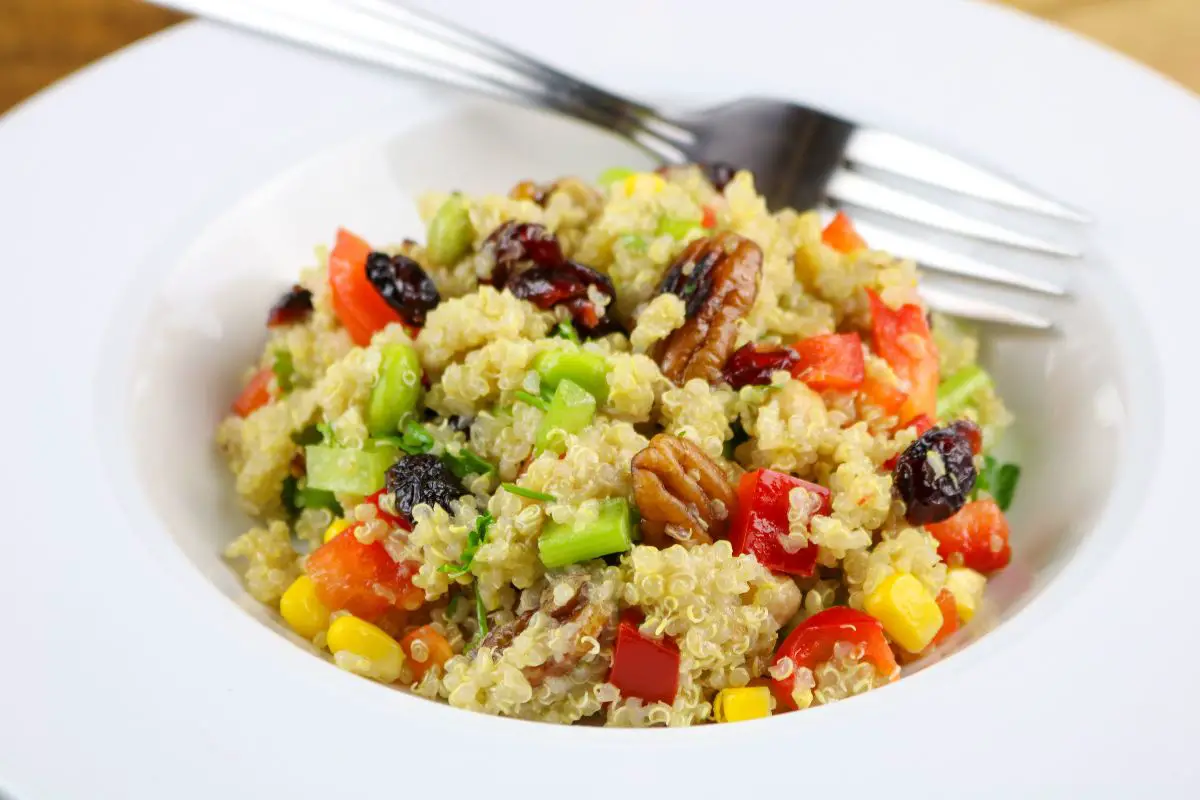Matcha powder is a great and versatile ingredient that can be added to many different recipes. One of the best ways to use matcha powder is by making matcha green tea smoothies.

If you’re a smoothie lover, then you may have seen recipes for matcha smoothies before. Although they’re becoming more popular, they’re not the most common type of smoothie.
If you’ve never tried matcha powder before, you might be wondering how to use it and what benefits there are.
That’s why in this article, we will introduce matcha powder and describe its positive attributes. We will also give you a recipe for the best matcha green tea powder smoothie.
What Is Matcha?
Matcha is a green tea powder that is made from finely ground and powdered dried tea leaves.
It originates from Japan, where it is a very common ingredient in a variety of drinks and desserts and even in cosmetics.
It is characterized by a very vibrant green color that is caused by the high chlorophyll content in the tea leaves.
The taste of matcha is slightly bitter and earthy, but there are some varieties that have a sweeter and creamier taste than others.
Its most common use in Japan is for tea. The historical tea ceremonies that are still practiced today are built around making matcha tea.
During this process, the powder is quickly whisked into hot water or milk to make a delicious drink.
Is Matcha Good For You?
All forms of green tea are known for being loaded with antioxidants but matcha has even more than regular green tea.
This is because other forms of tea are made by stewing tea leaves in hot water until the drink is brewed and then the tea leaves are removed.
However, with matcha, the entire tea leaf has been reduced to powder and is consumed as part of the drink, meaning that you get the full power of the tea leaves instead of just a sample.
As well as being high in antioxidants, there are also studies that show that matcha can be beneficial in other ways.
It can potentially protect your liver, enhance your brain function, prevent cancer, and reduce heart disease. Many weight loss products include green tea extract because of the properties contained within green tea as well.
Does Matcha Have Much Caffeine?
For the same reasons that matcha is higher in antioxidants than regular green tea, it is also higher in caffeine.
Consuming the entire tea leaf in the form of powder means that you will get the full blast of caffeine that is contained within the leaves.
However, the caffeine contained in matcha will not affect you the same way the caffeine in coffee will. It can give you energy and focus but without the more frantic buzz of coffee. Instead, it will leave you feeling calm.
How Long Does Matcha Last?
Unfortunately, matcha does not have a very long shelf life. It’s not the type of ingredient that will go bad and cause illness if you leave it too long, but it will lose its flavor, color, and effectiveness.
When you purchase matcha and open the packaging, you should aim to consume it within two months. After this period of time, the match will begin to lose its flavor.
When you first start making matcha green tea smoothies, you may want to buy your matcha powder in small quantities until you have more idea of how much you will use.
To keep it at its freshest, you should store it in the fridge after being opened.
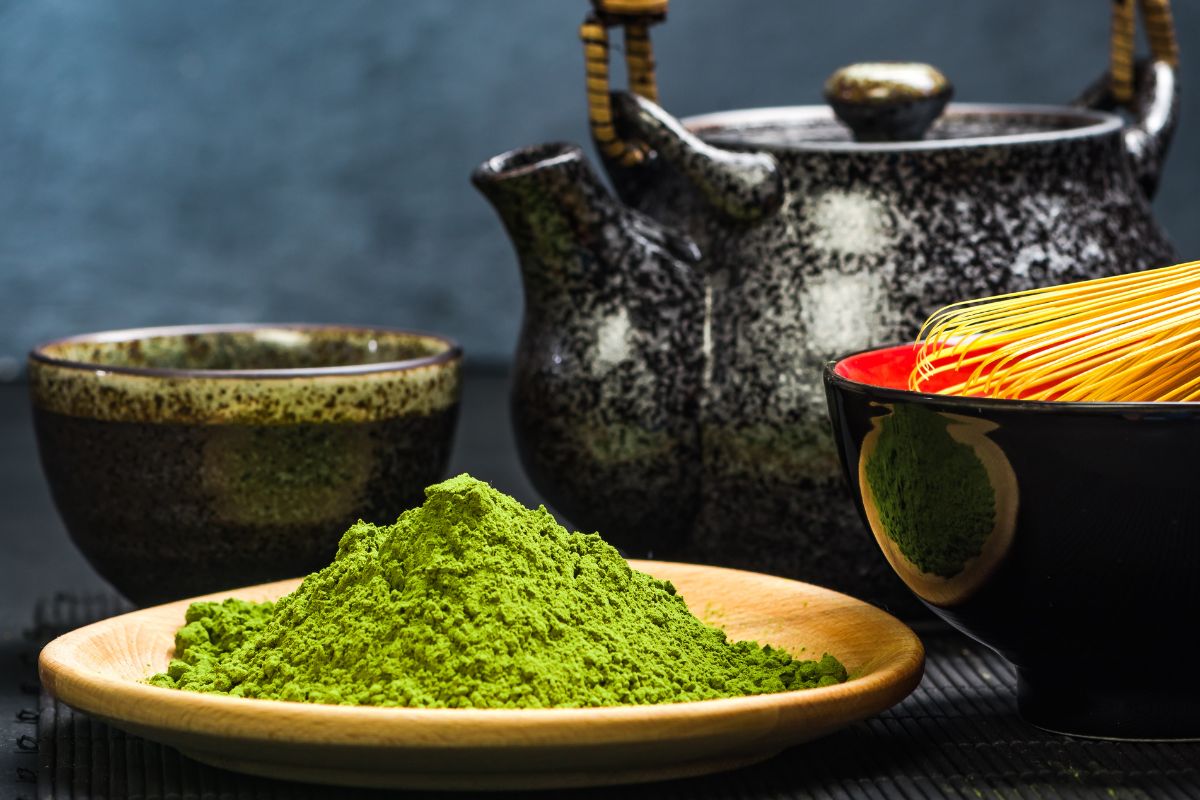
The Different Grades Of Matcha
When it comes to buying matcha, you will find that there are a couple of different main options available. Matcha is sold in different grades, and these different grades refer to the quality of the match.
Let’s take a look at these grades and see which is the best for smoothies.
Ceremonial-Grade Matcha
This is the highest grade of matcha. As the name suggests, it is primarily for tea ceremonies but it is also used for other situations where matcha is used for drinking without any additional ingredients.
Ceremonial-grade matcha is made from the youngest tea leaves and is usually a more vibrant shade of green than you get with culinary-grade matcha.
The flavor is very sweet and it gives a smooth and creamy taste and texture.
Culinary-Grade Matcha
Although this is lower quality than ceremonial-grade matcha, that doesn’t mean it is bad quality. Culinary-grade matcha still tastes great and is usually used in culinary situations such as smoothies, lattes, and cooking.
It is made from older leaves than ceremonial grade matcha and has a different flavor, too. Culinary-grade matcha has a more bitter taste that is stronger and less creamy.
What Is The Best Grade For Smoothies?
You can use either ceremonial-grade or culinary-grade matcha for your smoothies. Culinary-grade matcha is specifically for situations such as making smoothies so you can definitely use this matcha for your smoothies.
Ceremonial-grade matcha has a fresher taste and this will also work well for smoothies.
This type of matcha is generally more expensive than culinary-grade matcha, however, so you may need to take this into account as well.
When we make smoothies, we usually use culinary-grade matcha.
Ingredients For Our Best Matcha Green Tea Smoothie
Now, we’re going to look at how to make our favorite matcha green tea smoothie. We’ll go through the ingredients first and then share the recipe.
Matcha Powder
Let’s start with the most important ingredient: matcha powder. This is very high in antioxidants and is the perfect ingredient to start your day with. You don’t need much matcha powder in your smoothie as a little truly does go a long way.
You can easily adjust the amount of matcha powder that you include in your smoothie. To begin with, try adding just one to two teaspoons of the powder.
You can add more matcha if you prefer your smoothie to have a stronger matcha taste.
Frozen Bananas
Although you can use fresh bananas if you prefer, we find that frozen bananas work better and add a better consistency to the smoothie. They will make your smoothie thick and creamy.
Freezing bananas is easy. Simply wait until your bananas are as ripe as you like them to be and then peel them.
Once peeled, cut the banana into slices, put the slices into a ziplock freezer bag, and freeze overnight. You can freeze bananas for up to six months so you don’t need to use these quickly.
Mango
We chose to use mango in our smoothie but you can switch this out for pineapple if you prefer the taste of pineapple.
It’s best to use fresh mango as we’re already using frozen bananas. Mango adds a delicious sweetness to the smoothie that complements the more bitter taste of the matcha perfectly.
Almond Milk
Although we use almond milk in our smoothie, you can use any type of milk that you wish.
We like the slightly nutty flavor that comes from almond milk but dairy milk or other non-dairy milks will all be suitable substitutes.
Hemp Seeds – Optional Ingredient
You can leave these out from the recipe if you wish as they don’t alter the flavor or consistency of the smoothie at all.
They’re very nutritious, however, so adding hemp seeds to your smoothie will increase the health benefits. Specifically, they will add a lot of fiber and protein to your smoothie.
Spinach – Optional Ingredient
You don’t have to include spinach in this smoothie if you don’t want to or don’t have any to hand.
However, adding spinach will give your smoothie some additional nutritional benefits and is a great way to sneak some more vegetables into your diet.
Sweetener – Optional Ingredient
Whether you need to add any sweetener to the smoothie depends entirely on your tastes and how sweet the bananas and mangos you use are.
Matcha powder is naturally quite bitter and it can make smoothies that are too bitter for the tastes of many, especially if your fruit isn’t overly sweet.
If you do need to add some sweetener to your smoothie, we recommend using honey, maple syrup, or agave syrup.
You can add as little or as much as you need but we would also recommend starting with a little and tasting your smoothie to see if more is needed.

How To Make The Best Matcha Green Tea Smoothie
Now we know our ingredients, let’s look at how to make the smoothie. We’re going to include all of the optional ingredients in this recipe but you can skip over these if you don’t want to include them.
- Preparation Time: Five minutes
- Yield: Two smoothies
Equipment Needed
- Blender
Ingredients
- Two frozen bananas, cut into slices
- One mango, cut into cubes
- Two to four teaspoons of matcha powder
- One cup of almond milk
- One handful of spinach
- Two tablespoons of hemp seeds
- Sweetener
Step One
In a blender, add the cubed mango, sliced bananas, matcha powder, almond milk, and if included, the spinach, hemp seeds, and sweetener.
Step Two
Switch the blender to high and blend all of the ingredients until the mixture is smooth and creamy.
Step Three
If your smoothie remains too thick, add some more almond milk. If it’s not sweet enough, add more sweetener.
Hints And Tips
If your fruit is larger and chunkier, then your smoothie will be a thicker consistency regardless of how much you blend it.
The larger your fruit is, the more chance that you will need more almond milk in your recipe. Smaller fruits will produce a thinner smoothie. Start with a single cup of milk and then add more if you need to.
For the finishing touches, consider adding a sprinkle of hemp seeds and a little more matcha powder.
This will not only add a little more flavor to your smoothie but it will make it look more pleasing when it is served in a glass.
Frequently Asked Questions
Let’s answer some additional questions about this matcha green tea smoothie.
Can This Matcha Green Tea Smoothie Be Made In Advance?
All smoothies are best consumed when they have been freshly made. However, you can make this smoothie a little in advance if you want to take it to the office with you.
We would only recommend preparing the smoothie around two hours in advance and it should be kept refrigerated until drunk. Make sure that you give the smoothie a thorough shake before you drink it, of course.
How Much Caffeine Is In This Smoothie?
The amount of caffeine depends on the matcha powder you use. There are slight variations in the caffeine content in different types of caffeine, but on average, a teaspoon of matcha will have around 68 milligrams of caffeine.
This means that the caffeine in your smoothie will be dependent on how much powder you put in your smoothie.
Although you may want to increase the matcha flavor in your smoothie, keep in mind that each extra teaspoon of matcha powder will also increase the caffeine amount.
How Soluble Is Matcha Powder In Smoothies?
Matcha powder has been used to make matcha tea for centuries.
As long as it is whisked or blended into a liquid thoroughly, it will completely dissolve so you don’t have to worry about having a powdery taste or residue when you drink your smoothie.
Remember to keep your blender on high and thoroughly blend all of your ingredients together.
Final Thoughts
In this article, we gave a recipe for the best matcha green tea smoothie. We introduced matcha, the different types of matcha that are available, and the nutritional benefits of matcha.
For our matcha green tea smoothie, we listed all of the ingredients and gave step-by-step instructions on how to make the smoothie. Finally, we addressed any lingering questions about matcha powder and smoothies.
We hope that you enjoy this matcha green tea smoothie as much as we do!
- How To Make A Paleo Detox Smoothie: Berry Cherry Green Edition - April 18, 2023
- How To Make Spicy Paleo Paprika And Thyme Veggie Fries - April 18, 2023
- 15 Mouthwatering Keto Apple Recipes You Need To Try Today - April 18, 2023

